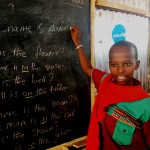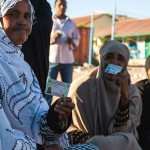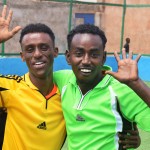Speeches Shim

Fresh milk. Somalis have got it, although most of the population drinks imported powdered milk since local production cannot meet the high demand for safe, fresh milk. By the time it is squeezed from the cow, collected, and transported to processing plants and stores, most Somali milk is already spoiled.

Thousands of Somali families escaped their homes when the 2017 drought paralyzed their villages, destroyed their livestock, and led to their children’s deaths. Without food, water or income, many traveled long distances to settle in large internally displaced persons (IDP) camps in and around Baidoa, the capital of South West state.

Somaliland’s National Election Commission (NEC) succeeded in opening all 1,642 polling stations on time, and despite long morning lines of voters eager to cast their ballot, the polls closed punctually and peacefully.

Najib* and Abdullahi come from BeletHawa, a village in the Gedo state of Somalia, where sub-clans have existed uneasily alongside each other for many years. Relations between clans in this small village are so strained that even basic social interactions are limited. Stuck in a cycle of violence over scarce resources, Najib and Abdullahi never interacted—until recently.

The livestock export industry is an essential component of the Somali agricultural sector, accounting for 80 percent of Somalia’s exports. In 2015 alone, traders earned $384 million in livestock exports, and the industry witnessed an annual growth of 6 percent.


Comment
Make a general inquiry or suggest an improvement.